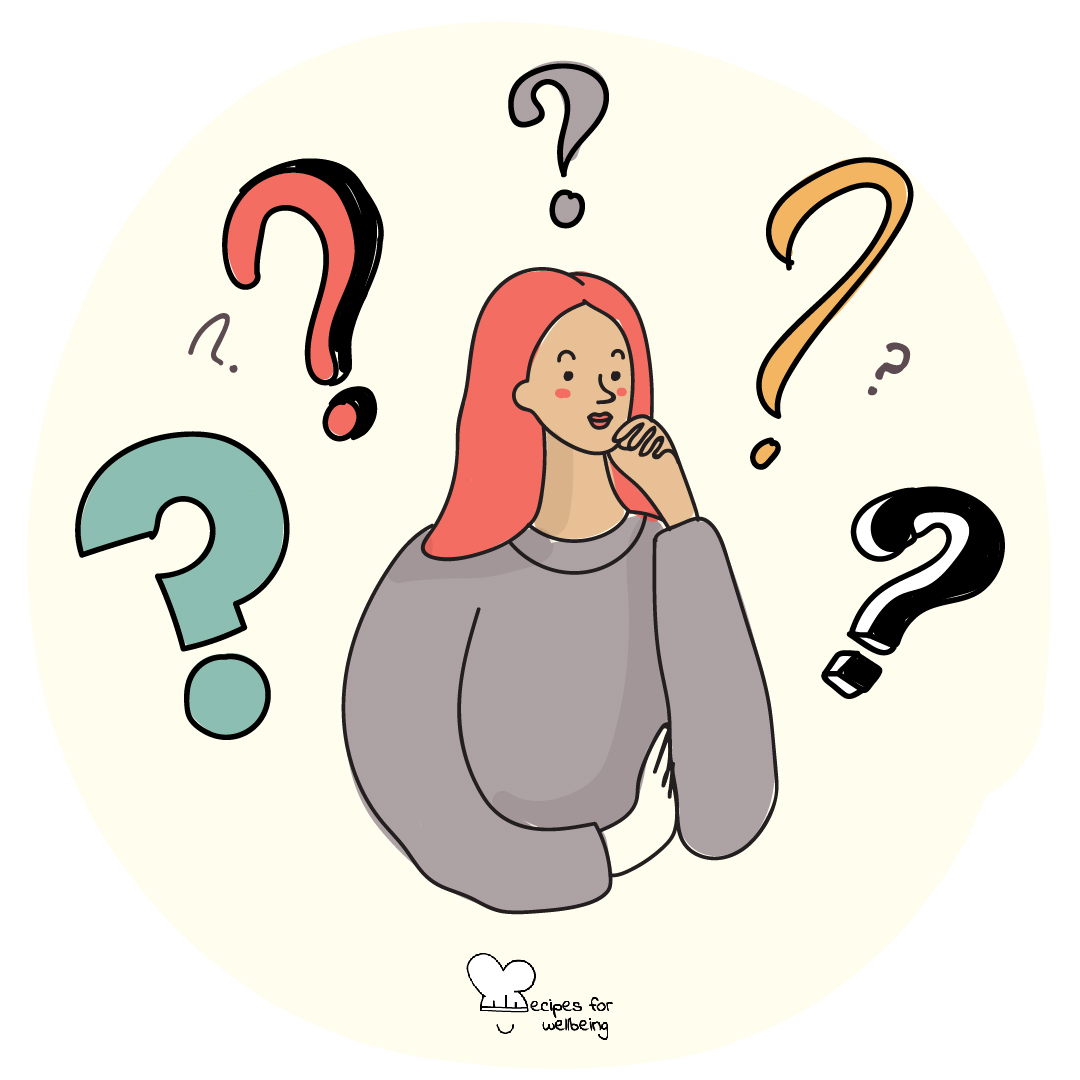
Asking powerful questions in your organisation
The secret of success is an absolutely ungovernable curiosity. —Larry King
👥 Serves: 11-25 people, 2-10 people, 26-40 people, 41+ people
🎚 Difficulty: Hard
⏳ Total time: Ongoing
🥣 Ingredients: Open-mindedness, “The Art and Architecture of Powerful Questions” book by Eric E. Vogt (if you’re curious to find out more about it!)
🤓 Wholebeing Domains: Community, Liberatory Learning, Radical Care
💪 Wholebeing Skills: Challenging, Coaching, Collaboration, Curiosity, Hosting conversations, Inquiry, Listening, Multiperspectivity, Openness, Reflection

Asking powerful questions in your organisation
📝 Description
Deep questions to stir up new, creative ideas for the success of your organisation.
When was the last time you felt genuinely curious about something? Maybe it was a new idea, a band, a novel, a new theory, or even a person. How did you learn more about the thing you were curious about? You likely asked questions.
Yet, think back to the days when you were in a classroom and the teacher handed you a quiz – the expectation was to do well, and that you should answer the questions correctly and efficiently. To do that, you likely would memorise theories and ideas and focus on what is in front of you. This helped develop the notion that many of us hold – that the right “answer” is more important than the right “question”.
What if we flipped that?
The power of asking questions should never be overlooked. Questions lead to dialogue, innovation, and breakthroughs. Questions help connect people, discover creative solutions to old problems and keep people curious. Questions are especially important in the workplace, where the greatest discovery comes from first being curious. Employees should feel empowered to not only keep asking questions but be asked questions that will spark motivation and innovation.
In our recipe “Organisations as inquiring systems”, we introduced a set of questions to assess your organisation’s capability to ask powerful questions. We recommend trying out that recipe first, as this recipe will help you further develop powerful questions, leading to greater success, a less of a “fix it now” environment, and a more connected organisation with a powerful mission.
This recipe has been inspired and adapted from the great work of Eric E. Vogt, author of The Art and Architecture of Powerful Questions, by our wellbeing content writer collaborator Marissa Del Mistro.
👣 Steps
Step 1 – How do you ask the “right questions?” (~2 hours)
Within your organisation’s leadership team, reflect to consider what is a “right question” anyway? This will require brainstorming, creativity, and having an open discussion within your leadership team.
You must first consider what makes a question good and powerful? Questions are powerful questions when they are thought-provoking, challenge the status quo, are broad enough to lead to new concepts, and generate motivation. They should end in question marks, not exclamation points or periods, to avoid any confusion.
How a question is delivered and asked is important. Consider how changing the way you ask a question can change the delivery and outcome. For example, close-ended questions that only require a “yes” or “no” answer are considered less powerful than questions that require deeper consideration, discussion, and thought. Questions that involve your entire organisation, customers/clients, and involve more time and effort tend to be more powerful.
The leadership team needs to be prepared to learn about strategic questions and how using them can help them be the best leader they can be. This means they will have to be comfortable with not always having the right answer and they should be open to listening to the creative input from everyone, as the power of collective conservation is influential. A leadership team that will be met with the greatest success are those who see their team as a collective, with each member offering unique knowledge and information.
Step 2 – Assess the organisation’s situation (~2.5 hours)
When things get challenging in any organisation, it is easy to focus on the negative and not consider the far-reaching future. However, with this exercise, you can shift the challenges of today into the successes of tomorrow.
Within the leadership team, begin by assessing the larger context in your organisation’s operations, including upcoming projects and systems. This will look different depending on the goals and mission of the organisation but can include an analysis of data, outputs, holding peer meetings, mapping the organisation’s strengths, threats, and opportunities.
Be curious and encourage your team to think outside the box when doing these analyses. Consider the broader landscape you are working in and look for obvious and not so obvious indicators or areas that are succeeding and areas that require more attention.
This will likely lead to some breakthroughs but also some frustrations. The goal is to frame whatever findings into strong questions – not as problems or issues. Think: How does A affect C? What does this suggest? If we added B to the questions, what would change? What’s the real question under all of this data?
In this pursuit, the leadership team should also lay the foundation of allowing their team to let their assets shine in an environment that encourages discussion, questions, and collective intelligence. To foster this, it must be an environment where employees feel confident in approaching questions, diverse perspectives are encouraged, grow from fallbacks, and everyone’s experiences and contributions are honoured and appreciated.
Questions to consider in this stage are as follows:
- What circumstances can we see in (your organisation)?
- What would someone who had a very different set of beliefs than we do say about ___?
- What are our true intentions?
- What’s the deeper purpose?
- What has really impacted you from what you’ve heard? What shocked you? What inspired you?
- What requires our immediate attention?
- If there was one thing that hasn’t yet been said to reach a deeper level of understanding/clarity, what would that be?
- What idea might we consider together that could make the most difference to the future of ___?
- What is needed to create change on this issue?
Step 3 – The treasure hunt (1.5 hours)
After step two is completed, you will likely have a ton of questions staring back at you. With that, commences the treasure hunt! This is the point where you should dig for similar topics and themes within the questions to uncover the organisation’s hidden treasure: core questions.
What are core questions? Think of them as 3-6 questions that, when answered, would drive change and make a positive impact on the organisation’s long-term success or the success of a particular project. Strive to remain open-minded and curious! These are not necessarily “problems” but discovered waiting to be found.
Step 4 – Long-term possibilities (30–45 minutes)
Imploring the work you and your team did in steps 1–3, it is now time to reframe and think of the long–term, endless, creative possibilities if the big 3-6 questions about the organisation were answered! This should be an engaging conversation full of excitement, different perspectives, and ideas. It may help you and your team discover new angles, new suggestions, and projects that were not previously considered.
Step 5 – Make it all happen (ongoing)
Step 5 is making it all happen, which will be an ongoing process for the organisation. Think of this step as making strides by creating tangible strategies, initiatives, and action plans that will put into place the “big answers” (step 3) to your “big questions” (step 4).
This step is ongoing as plans may change or adjust due to stakeholder involvement, funding, team changes, data, feedback from customers/clients and team members, etc. This allows the team to stay curious and open to learning and change that will ultimately drive acute awareness to shift from a “fix it now” attitude of the workplace to a possibilities attitude.
Always remember, the greatest next invention or innovation is behind the greatest questions!

